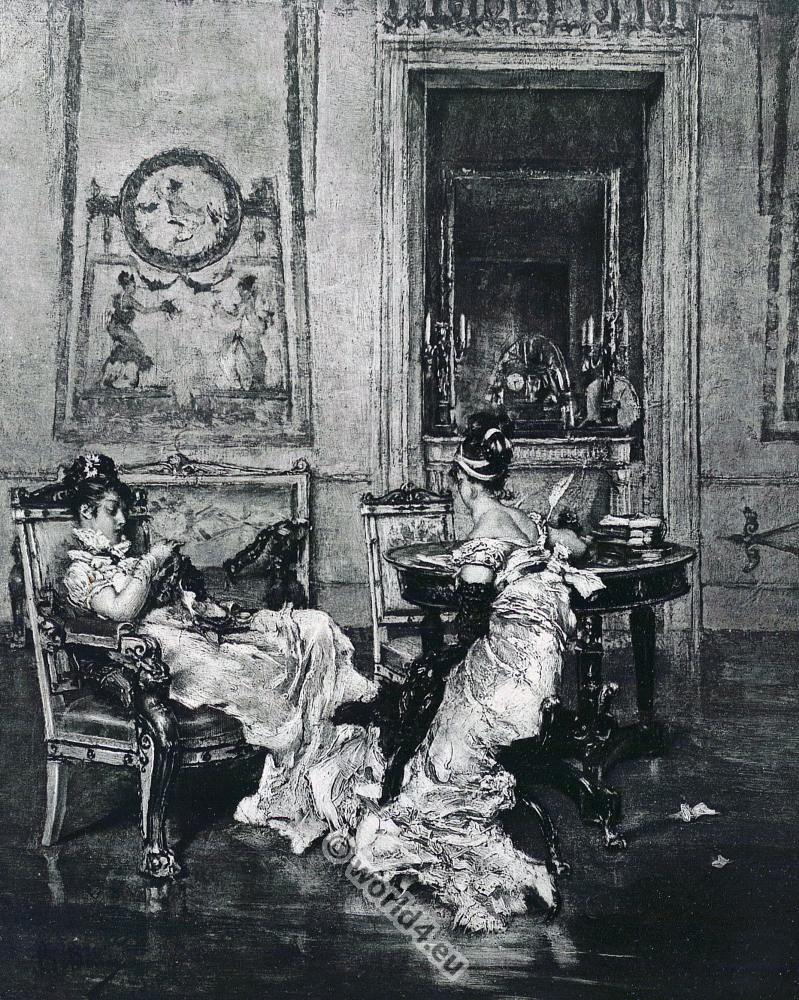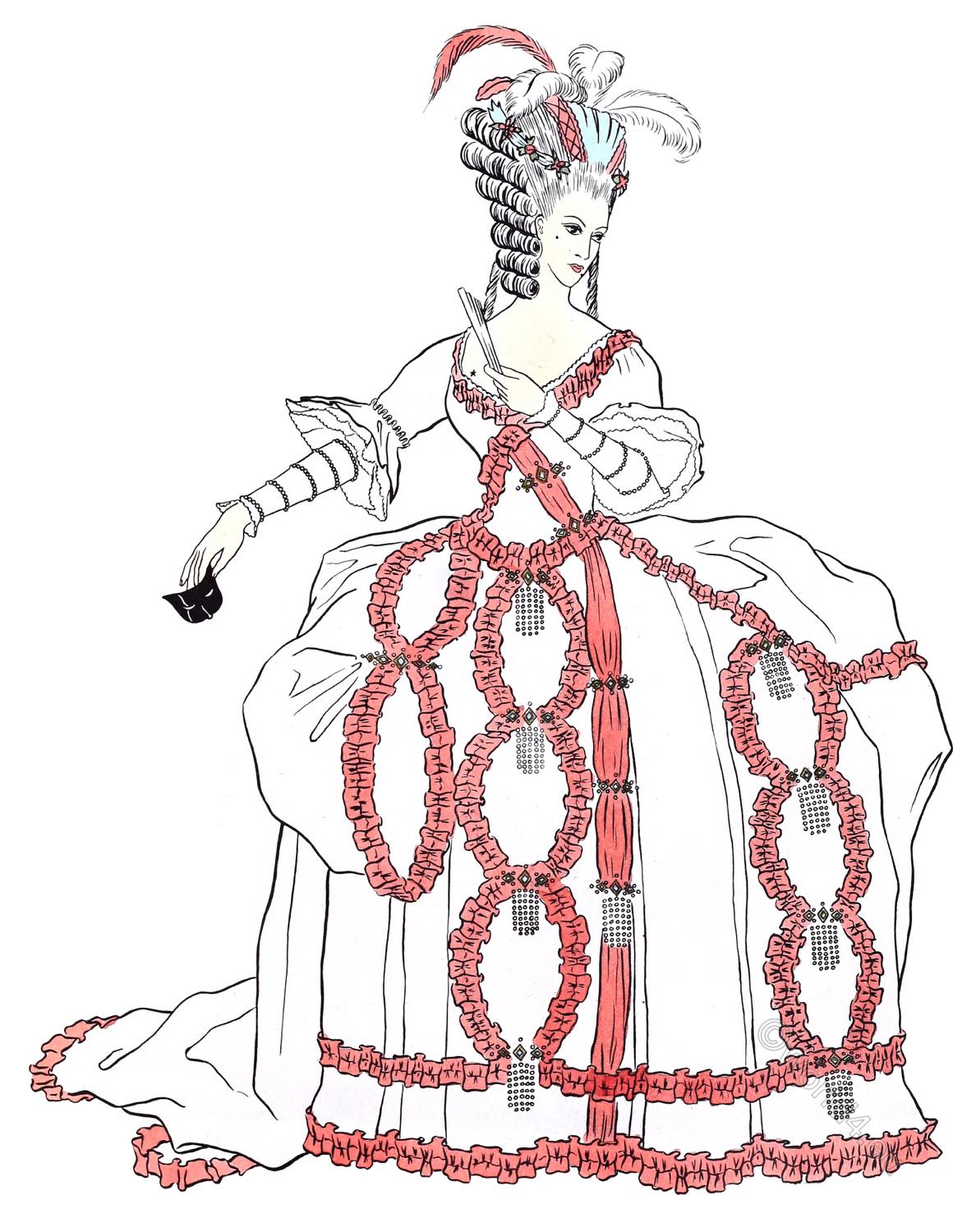
PLATE NO. 96
Ballroom ensemble. History of Costume.
EMPIRE-ROMANTIC 1800-1840.
To prove how little men’s costume has changed since the 19th century, one need only study this young man dressed in evening clothes of the 1820’s. His hair is worn somewhat longer than it is to-day, but net exaggeratedly so; his tail-coat differs only in small details, as do the trousers, from similar garments worn today in evening ensembles, and his waistcoat and pumps are almost like those of today.
The coat has a rather high collar with deep full lapels indicated by a slight notch. The shoulders are puffed, the waistline has moved down and tightened in imitation of feminine styles, and the tails are full and square and slightly flaring. The ruffles at the wrist are like those in Plate 93. The lace handkerchief is a usual evening accessory.
The short waistcoat has a lapel and collar similar to that of the coat. Notice how deeply it is cut, revealing a large cravat that fills the entire opening.
Trousers are, as yet, still uncreased. They fit loosely and may, as here, or may not, strap under the foot. The pumps are trimmed with grosgrain ribbon bows and have a slight heel.
This young lady wears a ballroom ensemble of the middle or late 1820’s. Her hair is piled rather high at the back behind a leather simply parted front. In general the coiffure was rising to the proportions seen in Plate 97, but this young woman exhibits a compromise with more conservative tastes.
Her neckline is an early example of the heart-shaped cut which was so popular during the late Victorian period. It is somewhat more liberally décolleté than is usual for the period, even for a dance dress. Notice how the neck- line is creeping down over the shoulders- this, too; anticipates a trend that found greater favor on the ball costumes of the crinoline period that followed.
Her sleeves are puffed out to about as great an extent as was reached during the entire Romantic period. They are unusually long for formal attire, but not out of place. Notice that by now the waistline has returned to a normal position, and has become very tight, indicating that corseting, which indeed has been in milder form since at least 1815, was to develop to a new high before the end of the century.
Skirts in general were still shortening, a movement which reached its maximum by 1830. Notice how the skirt has steadily widened until it is again suggesting the hoop skirt. The rounded, bell-shape quality suggested here was to de- velope into the silhouette shown in Plate 98. The practice of placing flaring decoration below the knees is still to be seen on this skirt.
Source: History of Costume. Museum Extension Project.
Related
Discover more from World4 Costume Culture History
Subscribe to get the latest posts sent to your email.






